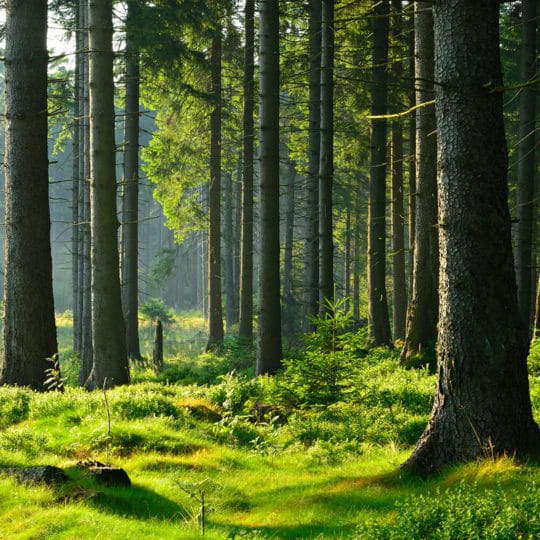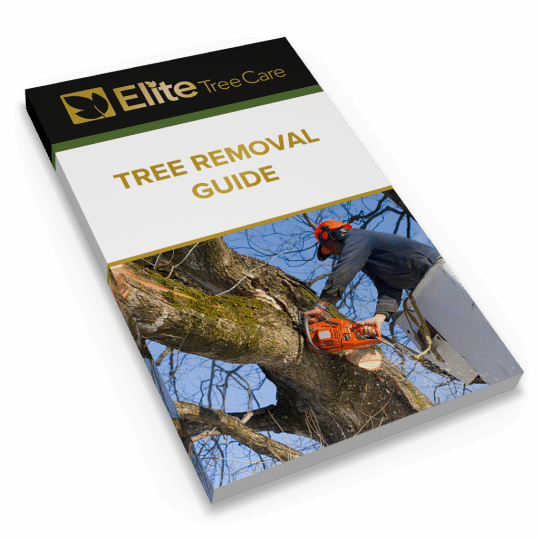Should You Prune or Remove Woodland Trees
And Who’s the Best Person for the Job
Posted
November 28, 2019

Owning wooded property—whether for a home or business—adds a level of responsibility when it comes to the trees. Learn when it’s best to prune or remove woodland trees and how to go about it safely.
When to Prune Woodland Trees
Proper pruning benefits any type of tree, whether it’s in your yard or nearby wooded area. However, if you’re running a lumber business or using the wood for something other than fires, you’re going to want to focus even more on the right way to prune than if it was any other tree in the forest.
Pruning woodland trees improve the quality, health, and appearance of the wood, therefore, increasing its value. There’s a level of self-pruning that occurs naturally for certain woodland trees, but landowners can help enhance and expedite the process by instituting further pruning methods.
With any tree, proper pruning removes certain live or any dead branches. With woodland trees, natural-target pruning is for removing branches to prevent discoloration or decay. No matter what you’re pruning, you want to make sure you’re working with sharp tools for a quick, clean cut. Use the appropriate tool for the height of the job, and if it’s too high to reach from standing on the ground, call a professional for help.
Other woodland pruning tips:
- Prune branches before they reach 1.5 inches in diameter. This helps ensure the cut wound heals quickly.
- Prune early and often for best results.
- Work in stages, removing only a few branches at a time. Removing too much negatively affects tree growth, decreasing value.
- Start pruning at ground level and work your way up.
- Prune during the dormant season after trees have lost their leaves.
- Remove lower branches to help provide clearance for access through the woods and expose scenic vistas.
- Make piles of removed branches near the edges of fields, forests, or ponds for wildlife to use as cover.
There are some instances when pruning won’t help a tree survive and it’s best to remove it.
Removing Woodland Trees
While clearing a forest is not a good idea, there are some factors to consider before removing a woodland tree.
- Safety. Any trees that are diseased, decaying, or dangerously close to structures should be removed all together.
- Maintenance. If you can’t keep up with regular tree maintenance consider removal to help prevent any damage to your yard.
- Space. You may need to remove a tree or two to make room for home expansion, crops, or property access.
There are just as many reasons why you shouldn’t remove woodland trees, including:
- Environment. Trees are a vital part of the ecosystem and make a positive impact on air quality, wildlife, soil, and more. Removing too many creates a natural unbalance. Unless you can replace a tree with another plant or structure that restores this balance, think twice about removing the tree.
- Shade. Fewer trees mean less shade around your home which leads to fewer choices for certain grasses or plants to survive in a hot environment—and less comfortable for when you want to be outdoors.
- Curb Appeal. Besides shade, trees provide beautiful scenery around your home and property.
- No Short-Term Fix. Trees take decades to grow and mature. Once you cut it down, you can replant, but it will take years to get it back.
If a woodland tree must come down, call a professional to remove it. This is the safest, most efficient route to take. Then, whether you’re using the wood for fire or furniture, it will be presented to you in whatever form you desire. Contact Elite Tree Care for more guidance on whether you should prune or remove woodland trees.

Download Your FREE Tree Removal Guide
Even dedicated DIYers should think twice before taking on the task of tree removal. Our guide will help you decide whether to hire a tree service and how to get the most value for your money.